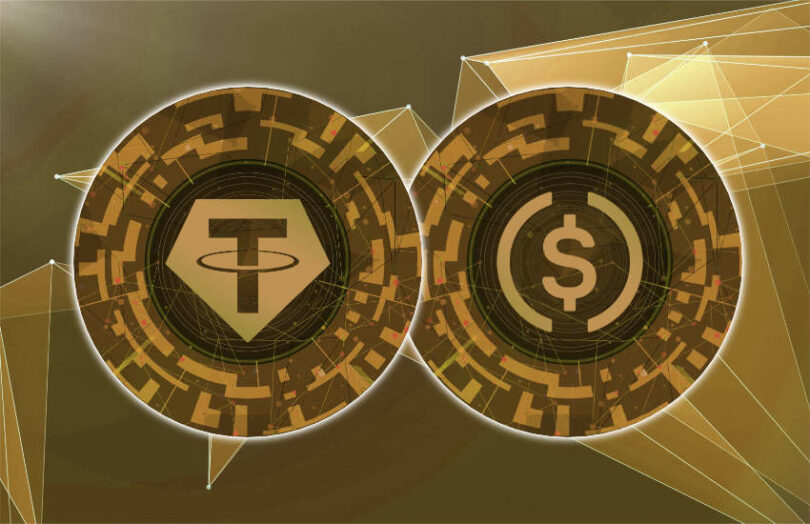Brevan Howard Digital published a useful analysis in a report, “The Relentless Rise of Stablecoins”. One of the key findings is that in 2022 there were $11 trillion in onchain stablecoin transactions, compared to Visa’s $11.6 trillion.
Yes, we know, it’s not quite comparing apples with apples. People who trade high volumes of securities don’t pay using Visa, whereas a large proportion of crypto transactions are financial. Still, it’s a big number. And it supports PayPal’s interest in joining the party by issuing a stablecoin, given its transaction figure was $1.4 trillion.
Lot’s of retail usage?
The research was based on analyzing blockchain transactions, and it found around five million stablecoin addresses are active each week. Three quarters of these transact less than $1,000 week, “indicating that small/retail users likely represent the majority of stablecoin users.” Many will be paying for financial transactions as opposed to real world usage such as P2P payments. But there are certainly a reasonable amount of the latter.
There’s one caveat re the retail transactions: it’s provided the blockchain data doesn’t include large volumes of questionable transactions.
Since the end of 2021, stablecoin transaction volumes have dropped only 11%, compared to centralized exchange volumes, which are down 64% and decentralized exchange volumes that have declined 60%.
This is consistent with self hosted wallet holdings currently at an all time high, whereas exchange and smart contract holdings are down 40% from all time highs.
On the whole, Brevan stuck to observations rather than interpretation, with one or two exceptions. Circle claims that more than 70% of USDC is held outside the United States, and Brevan observed that the Tether proportion is probably higher. That’s reinforced by our next point.
The Tron dominance conundrum
The reason for giving the caveat of the data being legitimate is because the Tron blockchain is so dominant in stablecoin transactions. As the report highlights, Tron and the (Binance) BSC blockchains account for 75% of transactions and 41% of volumes.

The above table from the report shows a pattern. Most of the chains, except for Tron and BSC, mainly use USDC. Whereas Tron and BSC mainly use Tether. A logical explanation is USDC is associated with Coinbase, and the other two blockchains are related to other exchanges. Tron founder Justin Sun owns the Poloniex and Huobi exchanges, although he denies the latter.
The amount of Tether issuance on Tron is almost $43 billion or 52% of all USDT stablecoins.
One possible (speculative) explanation for this massive Tron Tether balance and number of wallets – it accounts for almost half of all active stablecoin wallets – is that a large proportion of Tron’s users are Chinese. That’s what Tron founder Justin Sun claimed in this Tweet.
It’s also worth noting that Sun has been sued by the SEC in the United States. The SEC doesn’t only claim TRX is a security, but alleges that “Sun also directed the manipulative wash trading of TRX to create the artificial appearance of legitimate investor interest and keep TRX’s price afloat.” Most trading involves using a stablecoin, so wash trading inflates stablecoin transaction volumes. The question is by how much and will the allegations be proven?
This is one of numerous allegations made against Sun, including by The Verge, Protos and Adam Cochran, all of which he rejects.
Brevan have done a great job of analyzing the available data. With Tron making up such a huge chunk of the transactions, the question is how reliable is that data?






